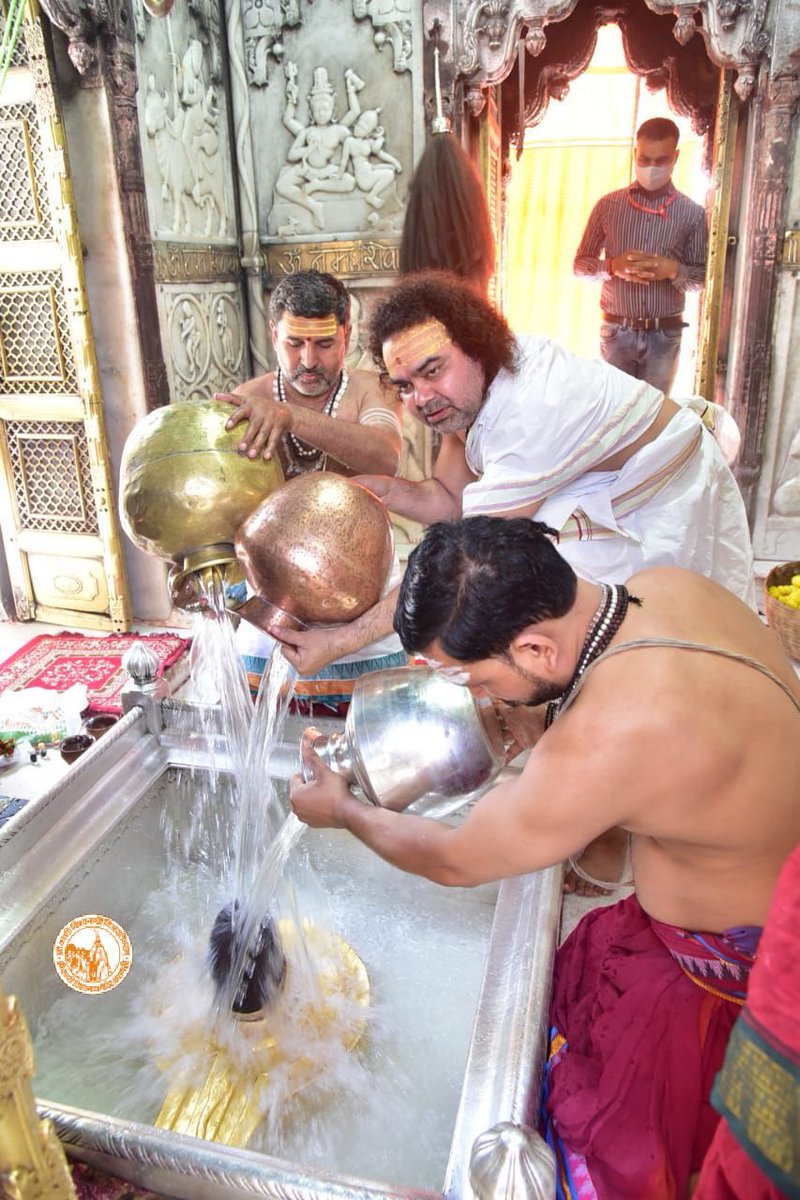

Thus Sudarsana, with his wife and his father-in-law, praised Devi. Yudhajit mocked Her, upon which Devi promptly reduced Yudhajit and his army to ashes. Devi helped Sudarsana and his father-in-law.

King Yudhajit, who had been present at the function, began to fight with the king of Benares. The ceremony at which the princess was to choose her spouse was arranged. The emissaries of the king of Benares passed through the Ashram of the Rishi and, when they saw the noble prince Sudarsana, they recommended him to Princess Sashikala, the daughter of the king of Benares. Devi appeared to him, blessed him and granted him divine weapons and an inexhaustible quiver. The Prince obtained peace of mind and the Grace of the Divine Mother by the repeated utterance of this syllable. It is the Bija Akshara (root syllable) of the Divine Mother. This syllable happened to be a powerful, sacred Mantra. The prince caught the first syllable Kli and began to pronounce it as Kleem. A hermit’s son came one day and called the eunuch by his Sanskrit name Kleeba. Yudhajit returned to his capital.įortune smiled on Prince Sudarsana. But, his minister told him about the truth of the Rishi’s statement. The Rishi said that he would not give up those who had sought protection under him. He then went out in search of Manorama and her son. The victor, King Yudhajit, thereupon crowned his grandson, Satrujit, at Ayodhya, the capital of Kosala. They took refuge in the hermitage of Rishi Bharadwaja. Manorama fled to the forest with Prince Sudarsana and a eunuch. But, King Yudhajit of Ujjain, the father of Queen Lilavati, and King Virasena of Kalinga, the father of Queen Manorama, were each desirous of securing the Kosala throne for their respective grandsons. Preparations were made to crown the prince Sudarsana. In days long gone by, King Dhruvasindu was killed by a lion when he went out hunting. The Story Behind the Origin of Vasanta Navaratri You will find this in the following episode in the Devi Bhagavata. "The Divine Mother or Devi is worshipped during the Vasanta Navaratri.

Swami Sivananda retells the legend behind this 9-day springtime ritual during which the devout Hindu seeks the blessings of the Mother Goddess. "Vasanta Navaratri" or Spring Navaratri is nine days of fast and worship that Hindus undertake during spring every year. Navaratri ("nava" + "ratri") literally means "nine nights." This ritual is observed twice a year, in spring and in autumn.
Hara hara mahadeva shambho. kashi vishwanath gange full#
"It falls on the day of full moon, Purnima, in the month of Ashadh (June - July) of the Shaka Samvat, Indian national calendar and Hindu calendar."įifteen videos play for approximately 52 minutes: Featuring Sri Sri Ravi Shankar, Swami Vivekananda, Ramana Maharshi (silent), Swami Sri Yukteswar (silent), Paramahansa Yogananda, Maharishi Mahesh Yogi, HAIDAKHAN BABAJI, Prabhupada, Osho, Sathya Sai Baba, Ammachi, Anthony deMello, and Jiddu Krishnamurti.ġ - SRI SATHYA SAI BABA SINGS THE GAYATRI MANTRA: (Sai slideshow) 5:05Ģ - Guru Purnima - Celebrating the Pinnacle 3:11ģ - Swami Vivekananda Speech at Chicago (Sept 1893) - Welcome Address 3:47Ĥ - Ramana Maharshi, Swami Yogananda & Paul Brunton (Silent) 0:55ĥ - Paramahansa Yogananda & Swami Sri Yukteswar (Silent) 0:11ħ - The origin of thought - Maharishi Mahesh Yogi 2:34ġ2 - Ammachi at the Parliament of the World's Religions 4:35ġ3 - Love 3:44ġ4 - Jiddu Krishnamurti - You have to be a "light" for Yourself 1:07ġ5 - Om Trayambakam SHIV CD I Artists : Ravindra Sathe, Devki Pandit 3:46 "On this day, disciples offer puja (worship) or pay respect to their Guru (Spiritual Guide). Guru Purnima (IAST: Guru Pūrṇimā, sanskrit: गुरु पूर्णिमा) is a festival traditionally celebrated by Hindus and Buddhists. Guru Purnima is celebrated on July 3, 2012


 0 kommentar(er)
0 kommentar(er)
